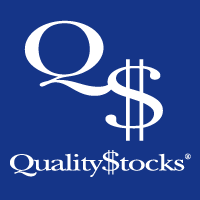Agora Holdings, Inc. (AGHI) Provides the FRAME for
Post# of 72

In October 2015, the highly respected Pew Research Center (PRC) published ‘Social Media Usage: 2005 – 2015’ (http://dtn.fm/C2jEp), which showed that the boundary between our online and offline lives is disappearing. One way in which this development is manifesting itself is in the proliferation of social media sites. The number of online platforms that offer social interaction is large and growing. Wikipedia’s ‘List of Social Networking Sites’ (http://dtn.fm/9b8OX) lists over two hundred. The usual suspects, Facebook (1,280,000,000), Flickr (32,000,000), Instagram (300,000,000), LinkedIn (200,000,000), Pinterest (176,000,000), Tumblr (226,950,000), and Twitter (645,750,000) are there. So are Academia.edu (18,000,000) for academics and researchers, aSmallWorld (550,000) for ‘European jet set and social elite world-wide’, DeviantArt (26,000,000) for art lovers, English, baby! (1,600,000) for English as a second language, and Vampirefreaks.com (1,931,049), which seems to be for vampires and freaks. Registered user statistics are enclosed in parentheses.
The PRC report found that the number of adult users of social networking sites has climbed from 7 percent in 2005 to 65 percent in 2015. The report also stated ‘over the past decade, it has consistently been the case that those in higher-income households were more likely to use social media. More than half (56%) of those living in the lowest-income households now use social media, though growth has leveled off in the past few years. Turning to educational attainment, a similar pattern is observed. Those with at least some college experience have been consistently more likely than those with a high school degree or less to use social media over the past decade.’
In 2005, the PRC found that 4 percent of those living in households earning less than $30,000 used social media, compared with 12 percent of those living in households earning $75,000 or more. In 2015, 78 percent of those living in the highest-income households used social media, compared with 56% of those in the lowest-income households – a 22-point difference.
Use of social media in 2005 was 4 percent for those with a high school diploma or less schooling, 8 percent for those with some college and 12 percent for college graduates. The comparable figures for 2015 were 54 percent for those with a high school diploma or less, 70 percent for those with some college and 76 percent for those with college or graduate degrees.
An earlier PRC survey titled ‘Frequency of Social Media Use’ (http://dtn.fm/gi6EP) found that 80 percent of internet users have a social media account and that ‘more than half of internet users (52%) use two or more of the social media sites measured (Facebook, Twitter, Instagram, Pinterest, and LinkedIn).’
The ‘mix’ of social media use is interesting. If Facebook can be used as ‘marker’ because of its widespread acceptance, it appears that about one-third of Facebook users will use another of the most popular sites: Twitter 29%, Instagram 34%, Pinterest 34%, and LinkedIn 33%. Instagram users were most likely to also have Facebook accounts (91%); LinkedIn users were the least likely (86%). Four percent of internet users use five or more social media sites. That number is likely to grow in the coming years as awareness of the range of platforms and their merits (and demerits) grows.
Agora Holdings, Inc. (OTC: AGHI), parent company of Geegle Media, is poised to capitalize on this burgeoning growth of social media activity. Earlier this year, the company launched FRAME, an organization tool for the management of social media and subscription-based accounts. FRAME is designed to meet the needs of consumers who use multiple social media websites and platforms on a daily basis by providing a dashboard from which they are all accessible.
At its launch, CEO Dan Terziev had this to say:
“Imagine FRAME as a single door that leads to many rooms. Each room represents a website that we log into several times each day. Rather than signing in several times, logging once into FRAME is sufficient to bring together all your social media accounts, making a far more organized and engaging social media experience.”
Agora Holdings will offer free access to FRAME for non-commercial users in a strategy that is expected to add users quickly. The company is already incorporating functionality with the main social media platforms.
For more information, visit www.agoraholdingsinc.com
Please see disclaimer on the QualityStocks website: http://Disclaimer.QualityStocks.com
 (0)
(0) (0)
(0)